Best MP3 players 2025: Regain control of your music library with these high-powered portable players
These MP3 players from FiiO, Sony and Actico are at the forefront of a digital-library revival - here's my top choices
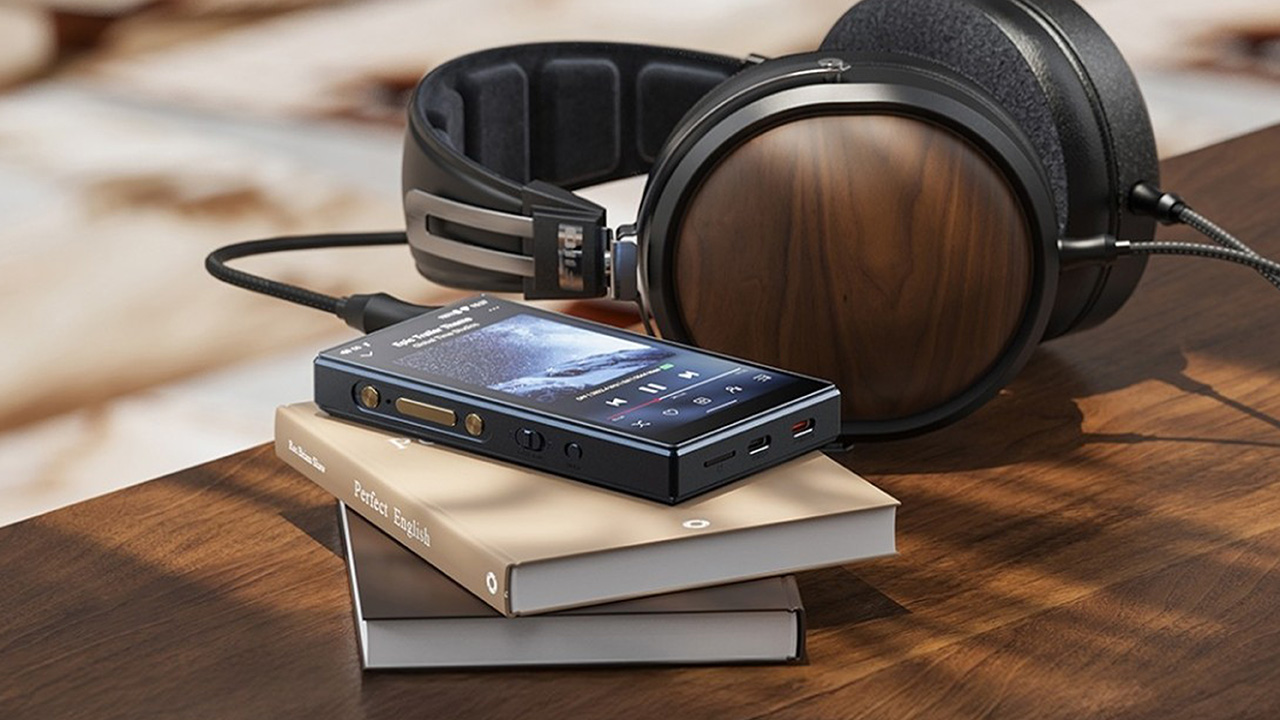
Anyone here old enough to remember the internet’s ‘teen’ era? It was a halcyon age of lawless online activity, arguably typified by the existence of platforms like Napster and LimeWire; a time in which one excitedly downloaded dubious files named “Linkin Park NEW SONG.exe”, and inevitably bricked the home computer.
The noughties was a web frontier, and one which nerdy musos explored with fervent glee - all in the name of the acquisition, collection and (sometimes) distribution of the humble MP3.
The frontier days are long gone now, and – though digital audio files remain the music-industry backbone they were always going to be – instead, lots of us seems to be streamers. However, the tide seems to be about ready to turn, much as it did with vinyl in recent years. Yes, digital music libraries are starting a comeback.
There are various reasons for this, from weariness with streaming services to preservation of rarer music to preservation of the Optimum Listening Experience. Whatever your own reason for returning to the MP3-playing fold, the best way to re-engage with a well-organised library is through an MP3 player. And the portable hi-fi world has changed immeasurably since the first iPod hit our pockets.
Today’s MP3 players benefit from a wide variety of tech-future brilliance, whether bare-bones players with solid DAC performance or touchscreen, Android-equipped, multi-media beasts with more connectivity than your television. And the best MP3 players on the market can be found right here in this round-up.
If you want to know a bit more about what you’re buying, I've also included a full set of frequently-asked questions – and even a glossary of the more esoteric terms.
Save big on a new player with our pick of the best Black Friday MP3 player deals.
Quick list
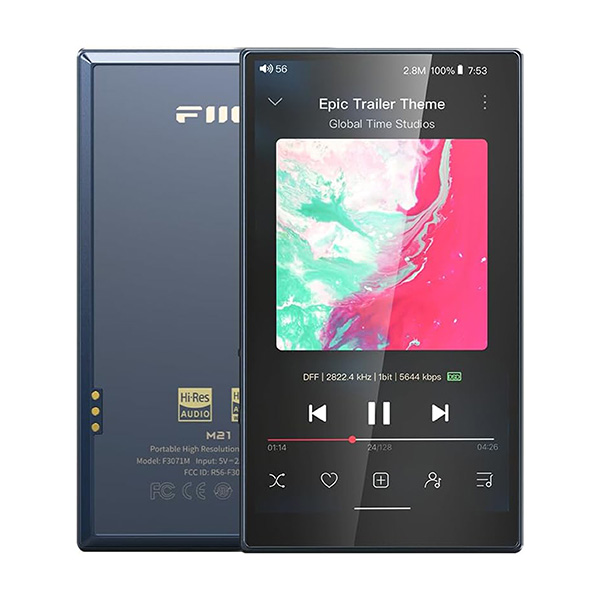
FiiO is one of the more productive brands in the hi-fi space at the moment, and the M21 a great example of its commitment to quality in each new product. This media player combines a bevel-less touchscreen and Android functionality with four high-quality DACs and a shedload of wired and wireless connectivity, making it my fave for the moment.
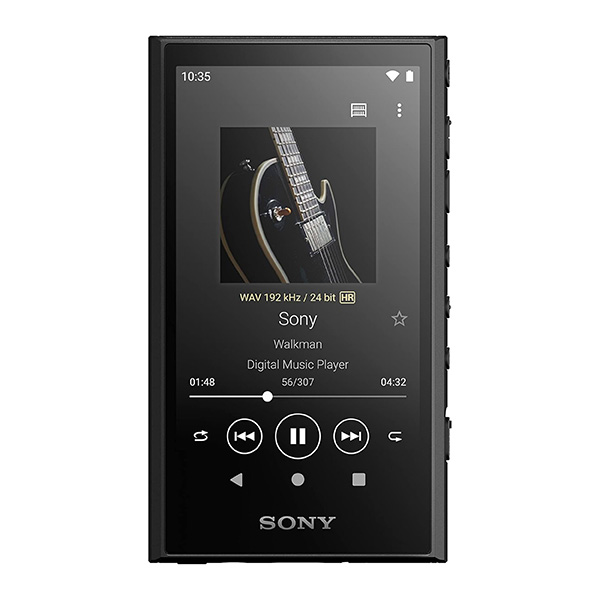
Sony’s revitalised its Walkman brand with a modern media player that absolutely meets the moment. It’s an Android platform with WiFi and quality Bluetooth connectivity, and with hard- and software that reflects Sony’s portable media-player legacy well. It’s a great performer both in fidelity and battery life, and solid value-for-money in the mid-range.
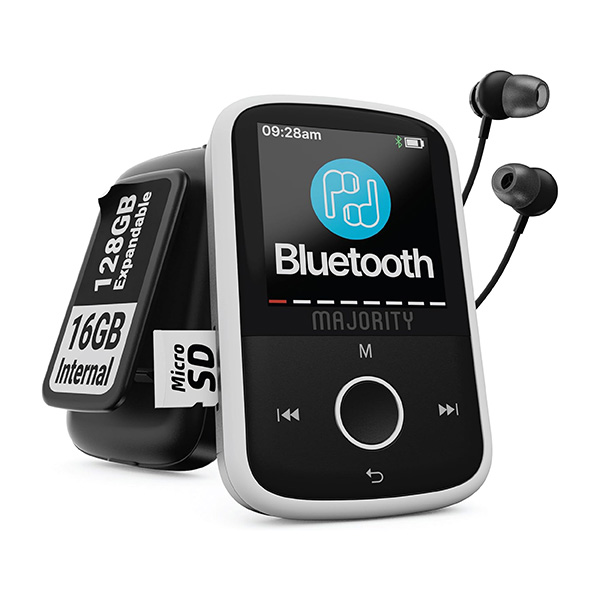
Majority’s MP3 Go is a diminutive MP3 player with a great deal more going for it than its price would suggest. It can handle decently high-fidelity audio and is easy enough to control; it’s super practical too, with its built-in sports clip for vigorous on-the-go listening. Shame about the basic Bluetooth connectivity, mind.
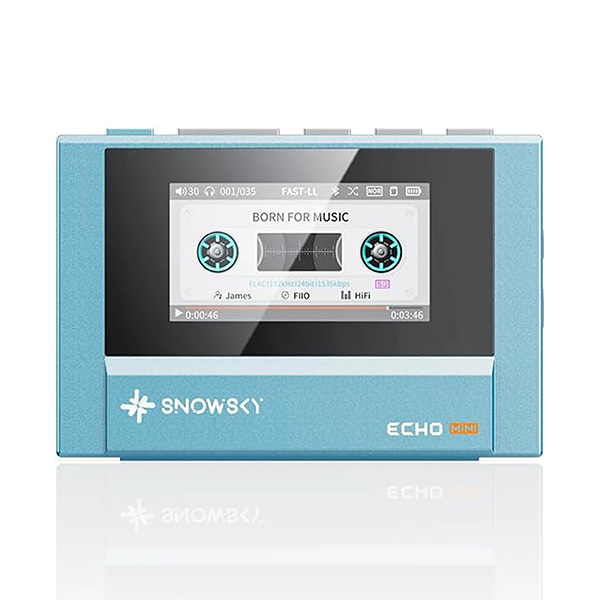
Snowsky is FiiO’s retro-lookin’ sub-brand, and home of the Echo Mini – a budget MP3 player that takes after the portable cassette players of yesteryear. From a tactile interface to the high-fidelity innards they access, the Echo Mini is a groovy device - at once chic and cheap. Its Bluetooth connectivity is bare-bones, but everything else is pretty far-out.
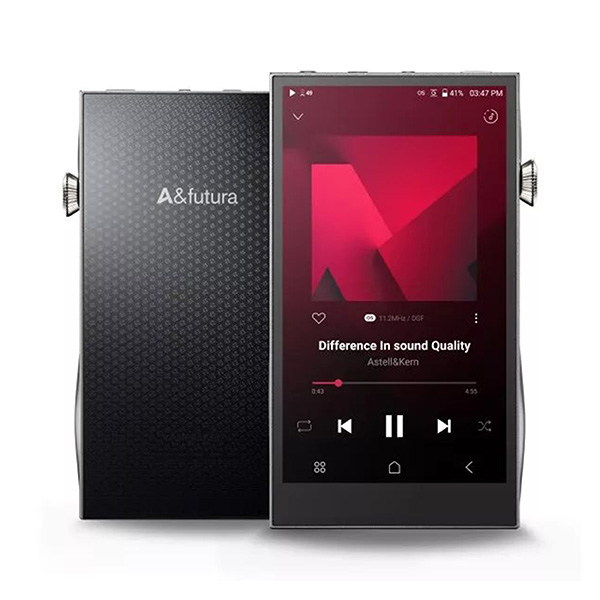
Astell & Kern’s SE300 is a four-figure MP3 player that does its level best to justify the price. Finicky DAC tech grants low-noise, high-dynamic results, accessed via your choice of amplification. It’s highly connectible, and the chassis that harbours this connectivity is a regal delight too. The battery’s a bit flat, but the sound is peerless.
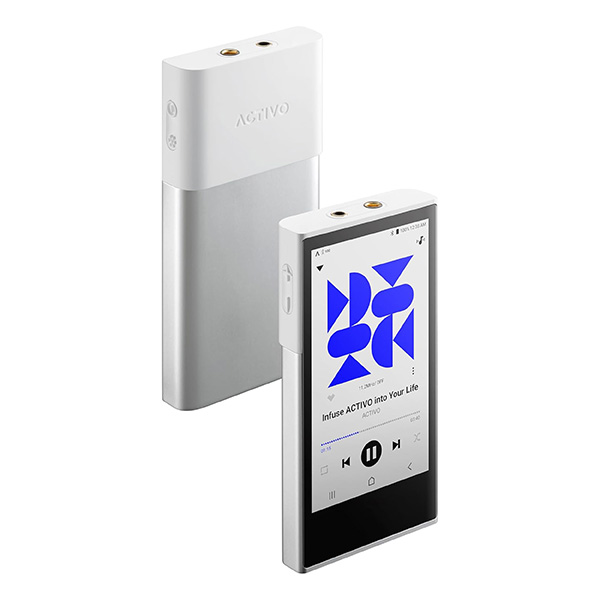
Activo’s P1 media player is the chic-est modern MP3 player on the block. If you’re fed up of cassette-player homages and retro colour schemes, this minimal affair will do you right. Good thing, too, that its loaded with cutting-edge tech – including an Astell & Kern-designed sound module for low-noise, hi-fi listening.
Best overall
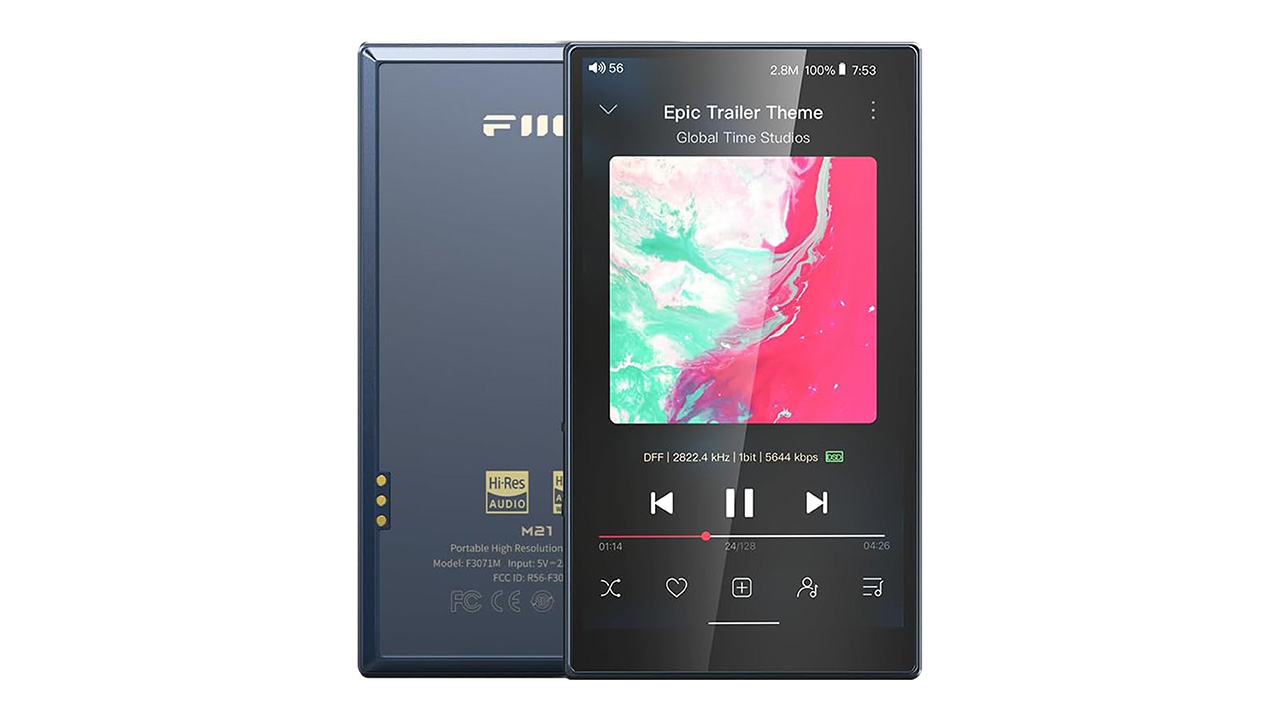
1. FiiO M21
Our expert review:
Specifications
Reasons to buy
Reasons to avoid
Audio: ★★★★★
Battery: ★★★★½
Storage: ★★★★★
Overall: ★★★★★
FiiO is knocking it out of the park at the moment. The Chinese hi-fi brand has been pumping out a huge variety of forward-thinking audio products in the past few years, from clever portable CD players and cassette players to high-quality DACs, butter-smooth planar in-ears and yet more besides.
It should come as no surprise that FiiO’s MP3-playing tech interventions are just as high-quality. Of the many different options in FiiO’s roster, I think the best all-rounder is this: the FiiO M21.
The M21 sits in a more affordable corner of the MP3 player category’s mid-range, with a compelling feature-set to match. It seems more smartphone than media player, with a bezel-less 750 × 1334 touchscreen, WiFi connectivity and Android operating system functionality – but look beneath, and you’ll find a much more focussed set of circuit-y innards, most notable among them being the four Cirrus Logic CS43198 DACs that handle your library with the grace it deserves.
As for the contents of your library, the M21 can handle up to 32-bit/768kHz – a frankly ridiculous ceiling that ought to hammer home the prodigious capability of this MP3 player. The 64GB of internal storage, and micro-SD expandability up to 2TB, make the FiiO M21 more capacious than most PCs, and its various output options – from 3.5mm to 4.4mm balanced, from coax to two-way Bluetooth – make it more connectible too. All this in your pocket, and for less than a mid-priced smartphone. This might be the best bang-for-buck media player on the market right now.
Best mid-range
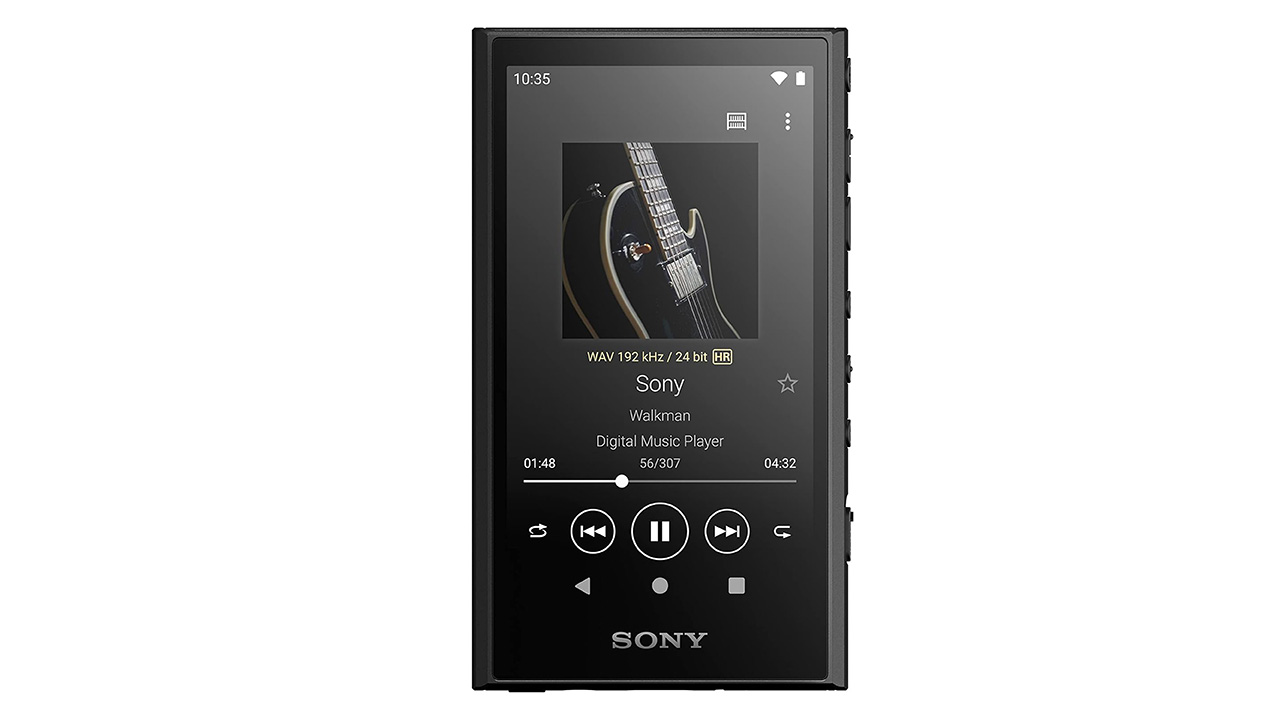
2. Sony Walkman NW A-306
Our expert review:
Specifications
Reasons to buy
Reasons to avoid
Audio: ★★★★★
Battery: ★★★★★
Storage: ★★★★½
Overall: ★★★★★
Look who’s back! Sony was a mainstay of the portable-media back in the 80s, with its irrepressible range of era-defining devices sold under the Walkman name. From cassette to CD, Sony was an industry leader – and it’s back with a Walkman for the modern age.
The Walkman brand has been revived with a handful of portable media players, but the flagship is this – the NW A-306, a mid-range media player with some darn impressive internals and a legacy-enshrining approach to design, both within and without.
There’s a lot to love about the Walkman NW A-306, but my favourite thing about it is the long battery life. It’s double that of most other media players, at up to 32 hours; combine this with high-fidelity performance up to 32-bit/384kHz, and Bluetooth connectivity including aptX HD and LDAC, and you’ve a device that does wireless right without sacrificing longevity.
There’s so much more to the A-306 than this, but it’s testament to this MP3 player’s peerless mid-range chops.
Best budget
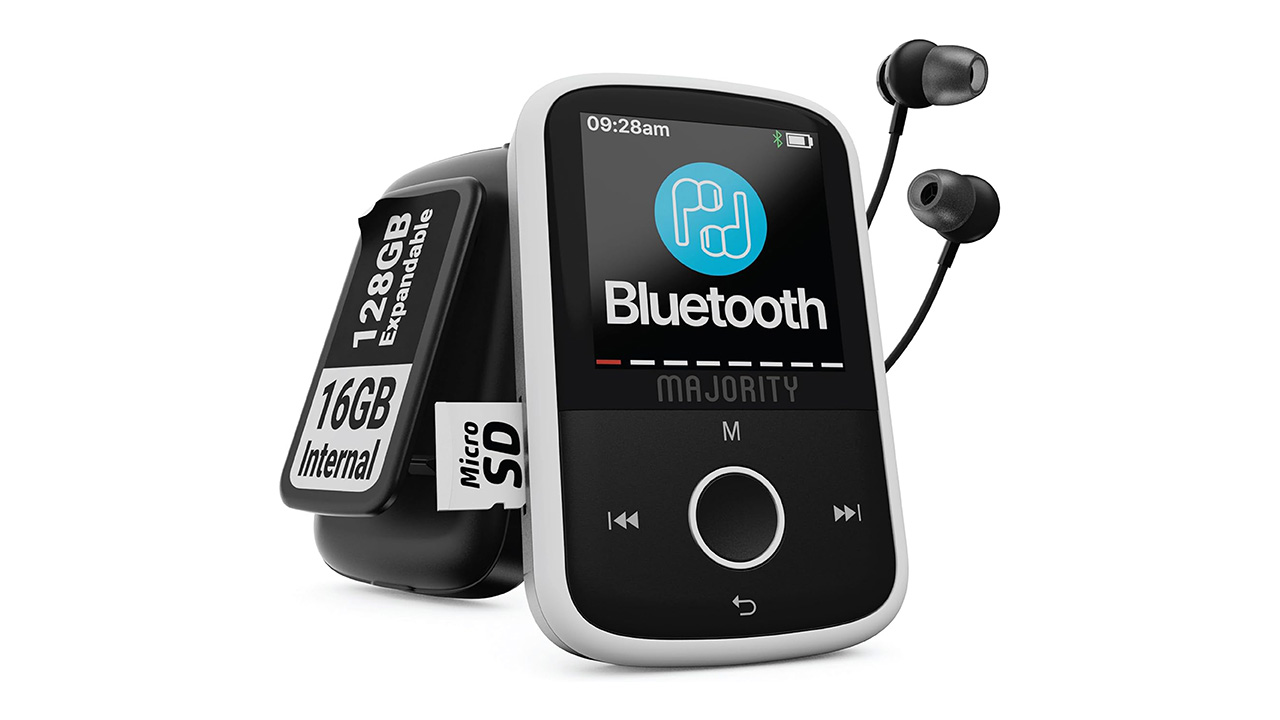
3. Majority MP3 Go
Our expert review:
Specifications
Reasons to buy
Reasons to avoid
Audio: ★★★★½
Battery: ★★★★★
Storage: ★★★★
Overall: ★★★★½
Majority is not a particularly well-known hi-fi brand, but it’s nonetheless been quietly plugging away at producing some of the most dependable home audio equipment this side of the in-house brands. A lot of Majority’s stuff is on the budget side, and the MP3 Go is no different; in fact, for MP3 players, it is one of the better budget options out there.
The Majority MP3 Go is a diminutive media player with a very simple design. It’s more reminiscent of the iPod clones of the mid-noughties than it is of any modern media device, and this is to its credit!
There’s a simple keypad for navigating its UI, and a small screen to show you what you’re doing; behind this, though, there’s Bluetooth 5.0 connectivity, 16GB flash memory and an excellent 34-hour max battery life.
This tiny thing costs little more than the price of a crate of beer, and has everything you need to listen out and about – with the added bonus of a built-in clip for attaching to a belt loop or armband, making it the cheap exercise-friendly media player you’ve likely been looking for.
Best retro
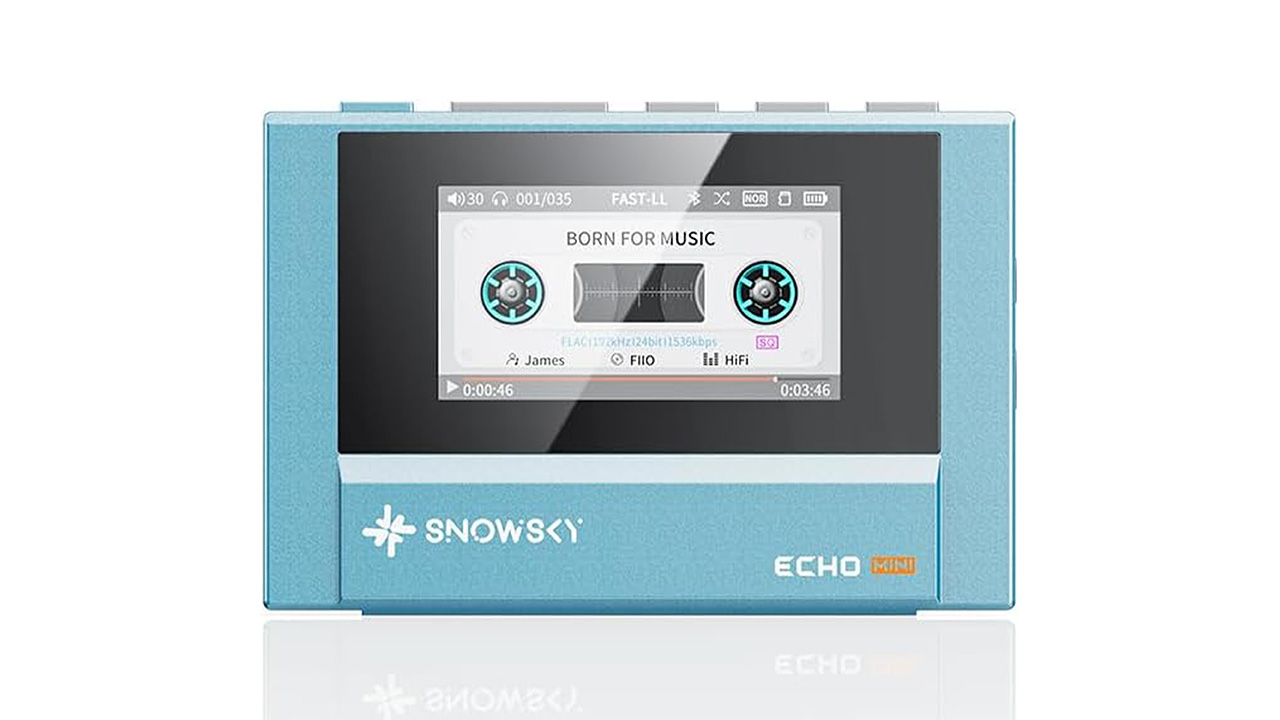
4. FiiO Snowsky Echo Mini
Our expert review:
Specifications
Reasons to buy
Reasons to avoid
Audio: ★★★★
Battery: ★★★★½
Storage: ★★★½
Overall: ★★★★½
Quelle surprise to see FiiO featuring more than once in this round-up – not just for the sheer volume of products falling out of it each quarter, but also for the quality of those very same products. This one comes from FiiO’s sub-brand Snowsky, which serves as a home for FiiO’s more retro-inspired tech fare – and, true to type, combines modern digital audio-playing smarts with a very nostalgic format.
FiiO’s Snowsky Echo Mini is a budget MP3 player that takes after the portable cassette players of old. The chassis is a familiar-looking brick, with top-mounted buttons for navigating your music and a delightfully-designed user interface displayed on its mini colour screen – which, incidentally, stands cleverly in for the window you’d find on the original cassette Walkman.
The simplistic retro look belies the comprehensive hi-fi practicality the Echo Mini holds. It’ll play practically any audio file you throw at it, and can support fidelity of up to 24-bit/192kHz.
You can plug headphones in via either a 3.5mm jack or a balanced 4.4mm jack, which is an unusual but welcome option for something so budget-friendly. If wired isn’t your style, there is Bluetooth connectivity, though this is sadly limited just to SBC.
Nonetheless, the Snwosky Echo Mini offers phenomenal value for money, particularly as a tactile, retro-friendly entrant into a newly-bustling product niche.
Best premium
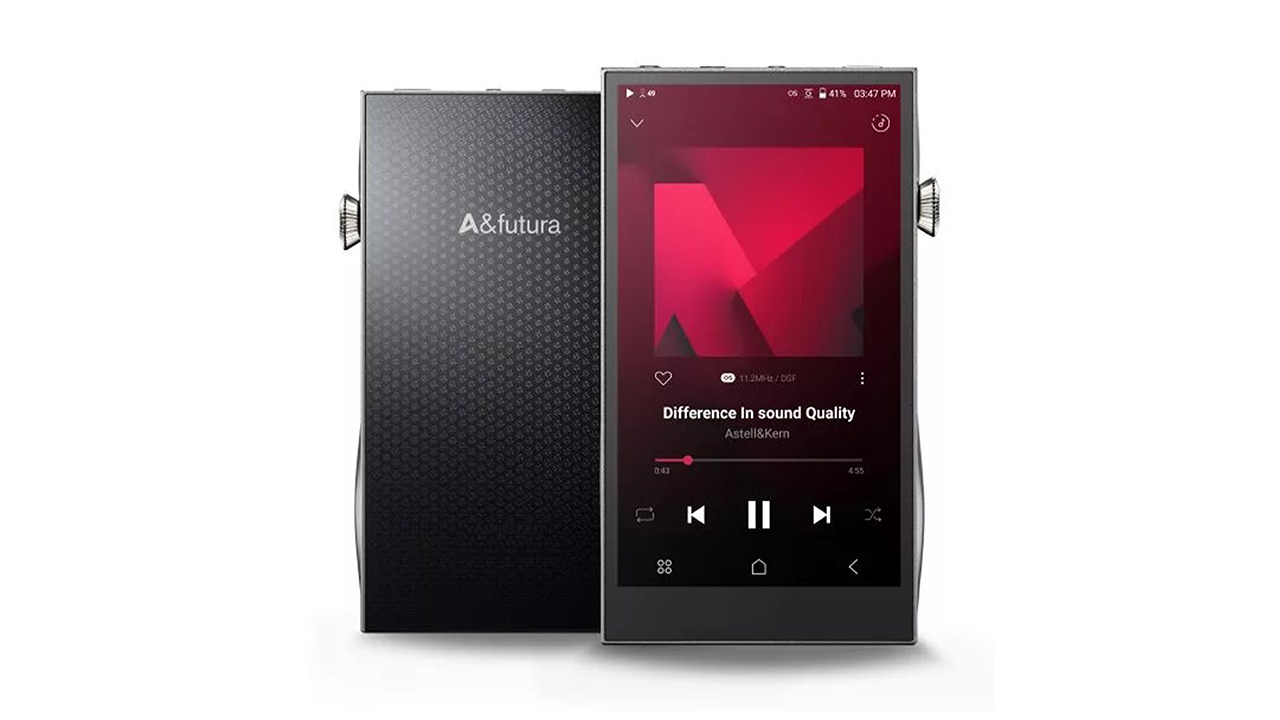
5. Astell & Kern a&futura SE300
Our expert review:
Specifications
Reasons to buy
Reasons to avoid
Audio: ★★★★★
Battery: ★★★★
Storage: ★★★★★
Overall: ★★★★½
Astell & Kern is a brand with its eyes set firmly on the audiophile market; its products, the majority of which are digital media players with varying degrees of portability, seek to reproduce your music as perfectly as possible – utilising everything from clever DACs to careful noise-reducing circuit designs to make it so. This is the A&futura SE300, a four-figure portable media that pulls every hi-fi trick in the book.
Under that sumptuous 5.46” HD touch screen, there’s a wealth of cutting-edge audio tech to be found – from a proprietary ladder DAC design to toggleable A/AB amp architectures. Without, there’s a very addictive side-mounted rotary control and three options for wired connectivity (which benefit from decent gain, too, enabling high-impedance headphone listening). A built-in 256GB storage is very tasty indeed, as is the rock-solid chassis in which it is contained.
It is a shame that four figures can’t buy you a battery that lasts longer than a day – but when so much audiophilic goodness is crammed into such a (relatively) small space, maybe a low battery capacity can be forgiven. There are more expensive portable media players out there, but I think this one is more than enough for most who have the budget to afford it.
Best design
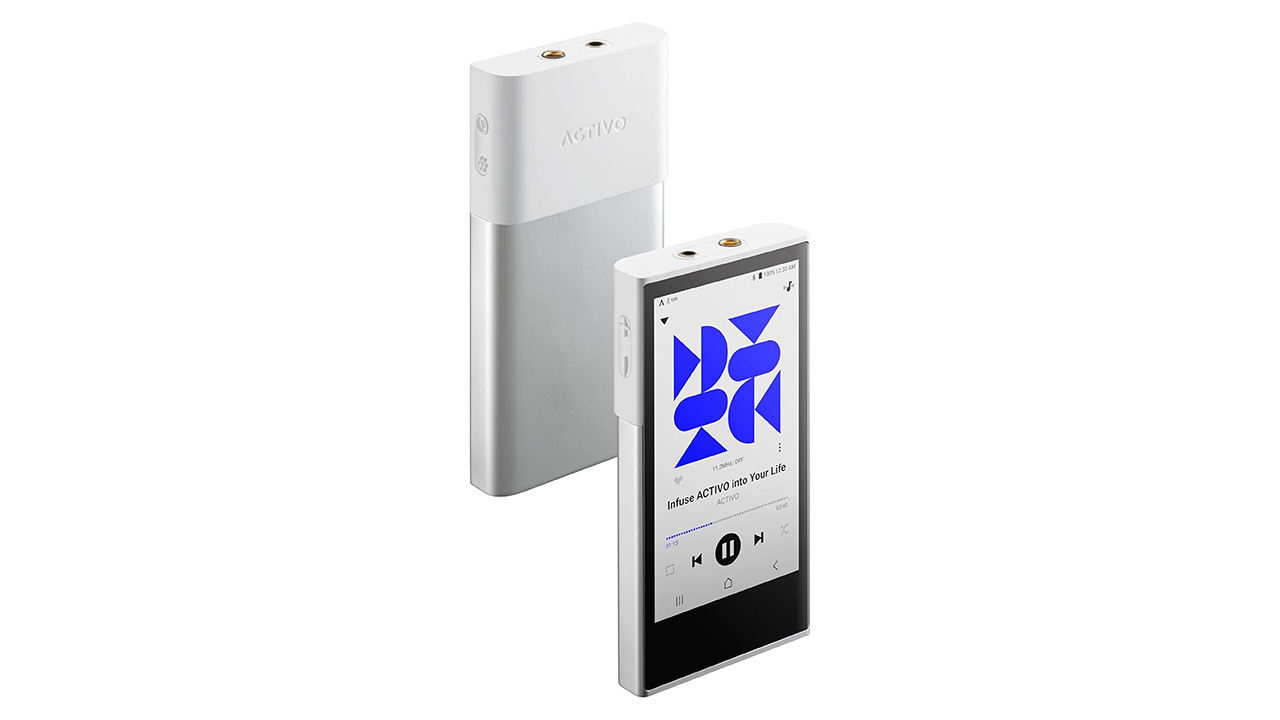
6. Activo P1
Our expert review:
Specifications
Reasons to buy
Reasons to avoid
Audio: ★★★★½
Battery: ★★★★
Storage: ★★★★
Overall: ★★★★
Korean outfit Activo is not a brand with much to its name, products-wise – but in a handful of releases, it has carved out some significant space for itself as a purveyor not just of quality audio products, but of strikingly cool audio products too. This is the Activo P1, a digital audio player that gives many heavy-hitter devices a run for their money and looks amazing doing it.
The core of the P1, hailing from the minds of Astell & Kern, is the Teraton Alpha sound module, that powers some seriously bank-breaking DAPs. This sonic tech minimises noise and maximises dynamically-rich amplification – and it can be found right here in the P1, for a fraction of the price it usually commands.
There’s a lot of praises to sing about the internals, but for me the P1 stands out through its exterior design. The chassis is a fetching minimal aluminium design, with buttons on each side for ease of operation and a stunning screen. Even the UI is thought-through with minimal flourishes. As far as aesthetics go, the Activo P1 is best-in-class.
Glossary
24-bit/32-bit
These numbers refer to the bit depth of a given digital audio file.
44.1k/48k/96k
These numbers refer to the sample rate of a given digital audio file.
aptX HD
aptX HD is a Bluetooth codec created by Qualcomm; it preserves high-fidelity audio while transmitting it wirelessly.
Balanced
Balanced audio connections utilise phase cancellation to minimise noise induced in a length of cable; some audiophile-friendly MP3 players have balanced jack inputs, enabling the use of this low-noise alternative to standard “unbalanced” wired headphones.
Bit depth
Bit depth describes the dynamic range of a digital audio file. In brief, the number refers to how many ‘steps’ in amplitude there are between minimum and maximum. CD-quality audio files are 16-bit, but 24-bit is the standard for lossless audio – and some DAPs are capable of playing 32-bit files, with a functionally infinite dynamic range.
Bluetooth
Bluetooth is a form of wireless communication that uses high-frequency radio waves for the FM transmission of data. It's the predominant method of listening to music wirelessly.
Codec
A Bluetooth codec is a specific way in which data is packaged for wireless transfer, and unpackaged at the other end. Different codecs seek to solve different problems – some might prefer lower latency, while others (like LDAC or aptX HD) might prefer preservation of audio fidelity.
DAC
DAC stands for Digital-Analogue Converter; DACs are the modules that convert digital files like MP3s into analogue audio, which can then be amplified and sent to your headphones. The quality of a DAC can dramatically impact the resulting analogue audio from a given file.
DAP
DAP stands for Digital Audio Player; an MP3 player is a DAP.
Hertz
Hertz is the measurement of cycles per second, used to describe audio sample rates and frequency ranges.
LDAC
LDAC is a proprietary lossless Bluetooth codec designed by Sony; it stands for Lossless Digital Audio Codec.
MP3
MP3s are types of audio file, among the most common you’ll come across in building a digital library. They're compressed audio files, and hence are lossy; still, there are high-fidelity MP3s that many cannot discern from higher-fidelity lossless files like WAVs.
Sample rate
A digital audio file’s sample rate is how many ‘slices’ of audio it contains for each second, measured in Hertz. CD-quality audio files have a sample rate of 44.1kHz, but modern audio files are capable of much higher sample rates.
SBC
SBC stands for SubBand Coding, and is a form of Bluetooth codec. It's the most basic audio codec going, and hence not the hi-fidelity audio experience many MP3-player buyers are looking for.
WAV
WAV files are uncompressed audio files; WAV stands for Waveform Audio File.
FAQ
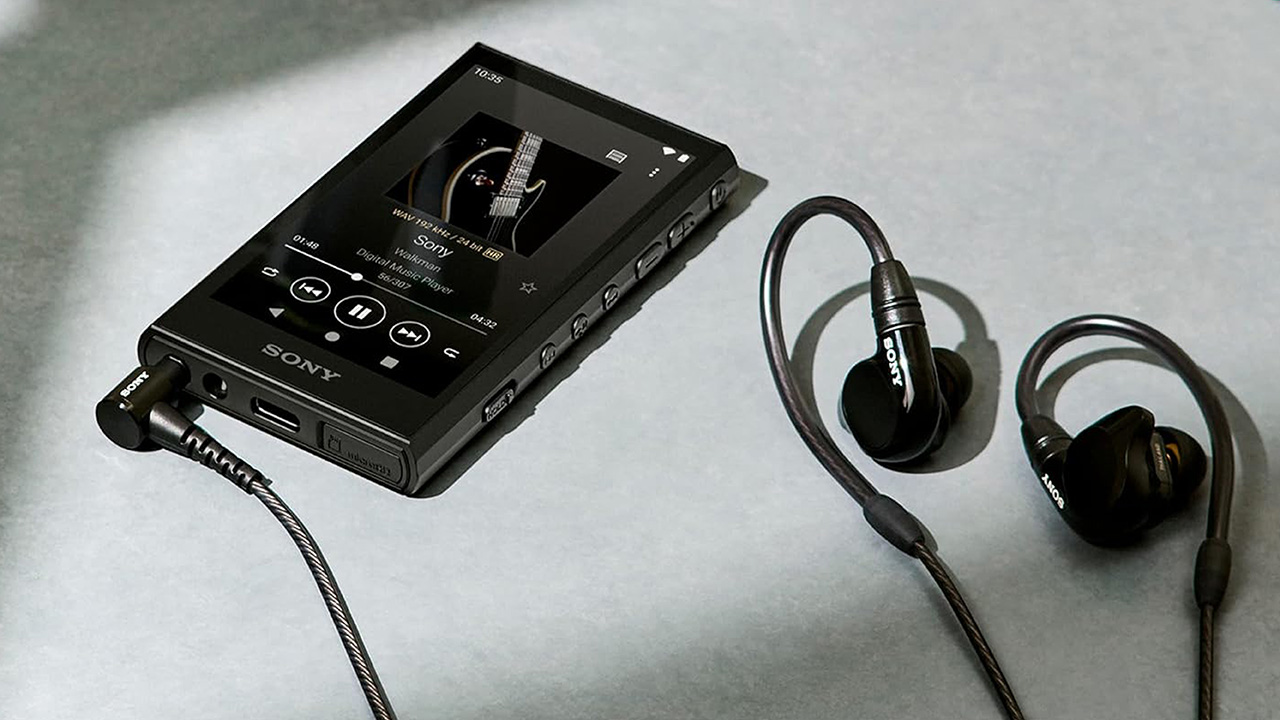
What features should I look for in an MP3 player?
Unsurprisingly, the features you need to look for in your next MP3 player are predicated on your own wants and needs as a consumer; runners wanting to pound tarmac to their favourite sounds will be looking for a very different product in comparison to calm-commuting audiophiles.
Most modern MP3 players share the same core feature-sets, though. For instance, you’ll be hard-pressed to find a digital audio player that doesn’t have some form of Bluetooth connectivity – or that can’t also handle FLACs and WAVs at least. The difference comes in how comprehensive each is at providing that particular modern convenience.
Cheaper MP3 players are less likely to support lossless Bluetooth codecs like AptX HD or LDAC, which would be a major turn-off for the more active listeners among us. Likewise, more expensive MP3 players are likely to support a broader range of file type; if you’re that one guy that likes his audio files in Ogg Vorbis, you’ll need to shop accordingly.
Most modern MP3 players above the budget threshold take after smartphones, in that they are Android-sporting, WiFi-equipped devices with a full touch-screen surface. These players can often access the Play Store, meaning you can use streaming services (and even social media, if you so choose) alongside your digital library.
If you want a completely connected DAP experience – including being able to download music on the fly – something of this stature will be more up your street than the cheaper local-only devices.
There are practical considerations, too. If you’re looking for an MP3 player to improve your gym experience with, you want something that’s happy being bandied about a bit – and all the better if it has a built-in clip for easy securing to your gym wear.
If you have an extensive digital library, you should also look out for the max capacity of the MP3 players you’re considering. This isn’t the max internal memory of the device, but the max size of external SSD it can ‘see’. More audiophile-oriented devices tend to be able to receive micro-SD cards up to 2TB in size, but more affordable options can be restricted to as little as 128GB.
Why do I need an MP3 player?
Given that most new DAPs look, smell and taste a lot like smartphones, why shouldn’t we just use our smartphones for accessing our digital library? There are a few good reasons for choosing a standalone MP3 player over your daily-driver smartphone, the first of which is connectability.
Dedicated MP3 players have the architecture to enable different kinds of audio output. Where smartphones have largely (and controversially) jettisoned the 3.5mm stereo out in favour of full wireless, DAPs retain that wired connection option – and often offer even more, in the form of a 4.4mm balanced audio connector or even a coaxial output for home hi-fi. This makes modern MP3 players far more accessible and versatile for listening experiences, a far cry from the jack-of-all-trades approach smartphones tend to take.
Looking deeper into the DAP, you’ll also find internal architecture that favours audio; by virtue of that same jack-of-all-trades approach, smartphones tend not to break the bank on DACs, also often relying on Android-inherent audio drivers and hardware interfaces that won’t set any worlds on fire. DAPs are designed ground-up for listening, with DACs and amplifier arrays that go beyond the off-the-shelf hardware used in products of a broader focus.
The final reason is a bit more immaterial, as it goes more to the act of listening than it does the quality of any audio. Smartphones are noisy things that make for a noisy mind; ever pick your phone up to do something, only to find yourself on social media or replying to an email and having completely forgotten what you were about to do? DAPs are more focused devices, which encourage active engagement with listening as an experience.
By separating music from your smartphone, you’re making music a considered thing, and improving your experience accordingly.
What’s the difference between Bluetooth codecs?
Bluetooth codecs are the unique ways in which data can be parcelled up for wireless transmission, then properly put back together at the other end. Different codecs suit different purposes, be they low-latency transmission or high-fidelity performance.
SBC is a standard Bluetooth audio codec, and a lossy one at that; the most basic Bluetooth-equipped devices will offer this alone, to the detriment of your wireless listening. The best MP3 players will be able to work with numerous Bluetooth codecs, including some that enable the transmission of lossless audio – namely, AptX Adaptive, AptX HD or LDAC.
Why are MP3 players coming back?
MP3 players are making a comeback for a number of reasons, ranging from the higher audio quality of dedicated DAPs against modern smartphone tech to a growing distaste for subscription services as a sole source for music. The various reasons are covered in more detail in my piece about the rise of the MP3 player, but in brief: the return of DAPs is similar in some ways to the return of the vinyl record.
At the turn of the millennium, digital music libraries were the future, and the early-noughties arrival of consumer MP3 players was a revolutionary step towards bringing a breadth of music to our pockets in a way cassettes and CDs never could. But technology fast strode past the novelty of pocketing gigabytes worth of Steely Dan bootlegs, as smartphones entered the scene and the streaming age began.
Today, there’s an appetite for reviving the digital music library in order to circumvent the fickle, expensive and sometimes unethical nature of streaming services. Owning music means never losing access to an album again – and being able to listen to it on your terms, in a fidelity of your choice.
Why you can trust us
⚡ Louder was established in 2017 and founded on long-running brands including Metal Hammer, Classic Rock and Prog (launched in 1986, 1998 and 2009 respectively)
⚡ Over 80,000 products reviewed on site, from music listening tech to albums and box sets
⚡ Our reviewers are all passionate music fans who draw on decades of testing experience
Louder’s reviewing team consists of music fans, musicians and professional product testers, who between them have accumulated decades of product reviewing experience, writing thousands of words on music listening gear across thousands of reviews on Louder. Our tests also inform our buyer's guide - just like this one.
As lifelong music fans, we're serious about the tech we listen to our favourite artists on. We want them to sound incredible, giving us all the detail those bands intended us to hear, and deliver the perfect balance of bass, mids and highs. We're looking for pure immersion in our chosen sounds, whether it's a classic '70s rock album, or a cutting-edge noise band.
And we test MP3 players with albums we know inside and out, and that we've listened to on a variety of systems already, so we know exactly what we should be hearing and when we're being short-changed by lackluster audio.
Meet the expert

James Grimshaw is a freelance writer and music obsessive with over a decade in music and audio writing. They’ve lent their audio-tech opinions (amongst others) to the likes of Guitar World, MusicRadar and the London Evening Standard – before which, they covered everything music and Leeds through their section-editorship of national e-magazine The State Of The Arts. When they aren’t blasting esoteric noise-rock around the house, they’re playing out with esoteric noise-rock bands in DIY venues across the country; James will evangelise to you about Tera Melos until the sun comes up.
The latest news, features and interviews direct to your inbox, from the global home of alternative music.

James Grimshaw is a freelance writer and music obsessive with over a decade in music and audio writing. They’ve lent their audio-tech opinions (amongst others) to the likes of Guitar World, MusicRadar and the London Evening Standard – before which, they covered everything music and Leeds through their section-editorship of national e-magazine The State Of The Arts. When they aren’t blasting esoteric noise-rock around the house, they’re playing out with esoteric noise-rock bands in DIY venues across the country; James will evangelise to you about Tera Melos until the sun comes up.
